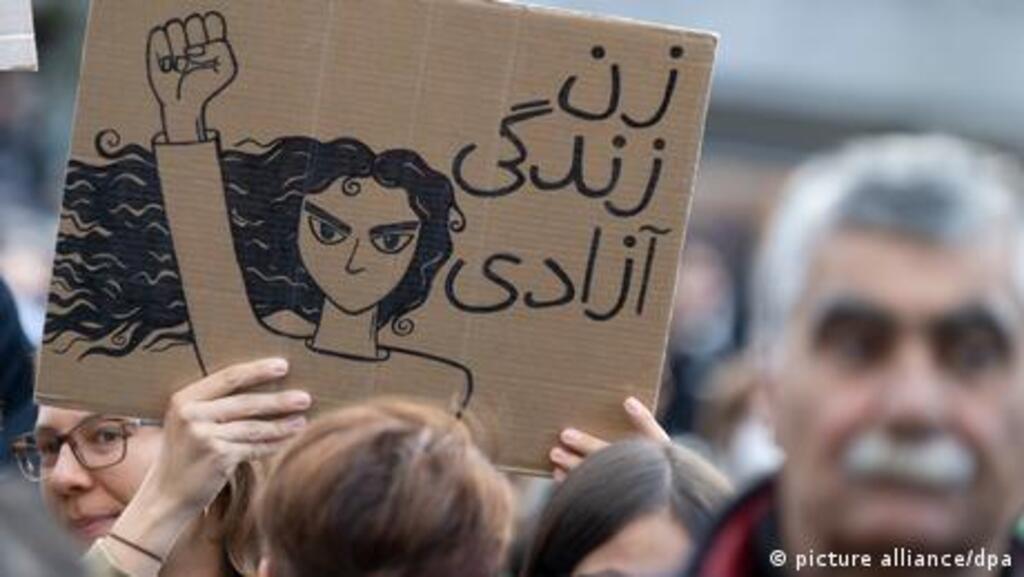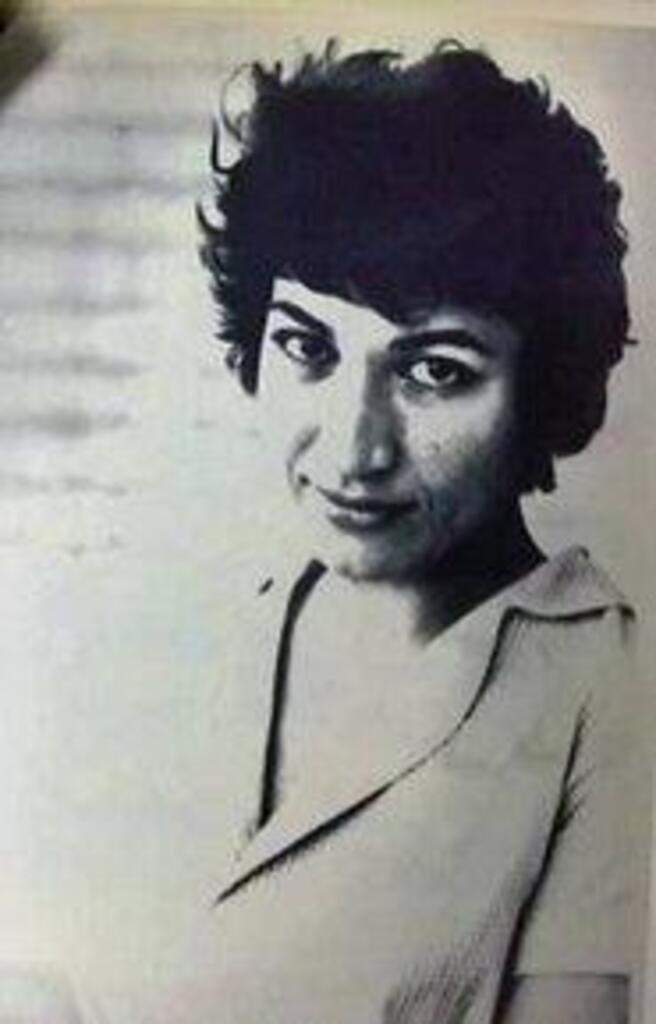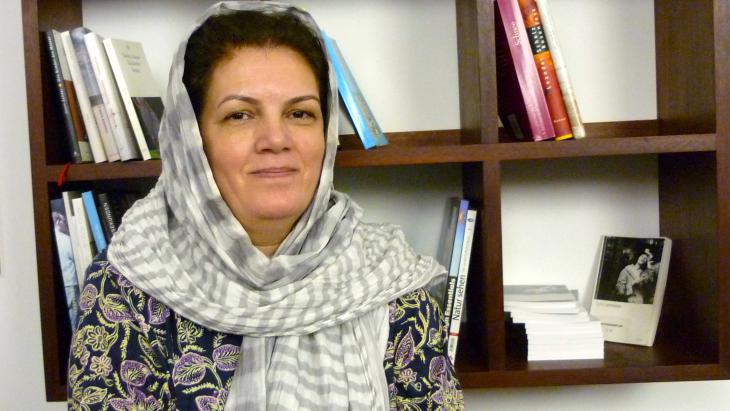Iranian literature in times of uprising

"The verse is my companion, my beloved / for his sake must I venture everything", wrote the poet Forough Farrokhzad in 1955. As so often in her poems, these are words of resistance, revolt, a refusal to accept the status quo. And it is no accident that Farrokhzad, who died in a car crash in 1967 at the age of just 32, is being quoted by today's protesters in Iran. The same goes for her status as Iran's most important female writer of the 20th century.
Elsewhere, she writes, "A spark, a tiny spark / from time to time ignited / this mute, soulless mass / burst them open from inside / they rushed at one another / men taking knives to cut / each other’s throats / and, in a bed of blood, / lying / with underage girls".
At that time, long before the Islamic Revolution of 1979, the young poet was doing something unprecedented: rebelling against the constraints and the violence of a patriarchal society, and opening herself up as a woman, clearly articulating what moved millions of other women in the country. And that wasn't all – she also wrote candidly about sexuality, love and longing. Even today, many of her verses have lost none of their currency or their impact.

Her work is still being read, and many female authors, even those from the younger generation, still cite her as a role model and an inspiration. The Khomeini regime's attempts to ban her work (in the 1980s, she was officially out of print and unobtainable) failed miserably. And that holds true more generally, too: censoring or banning texts doesn’t mean they can't be accessed.
Literary black market
Uncensored texts circulate online, and in printed form on the flourishing literary black market – or they are published by exile presses and find their way back into Iran from abroad.
All the same, censorship does have a huge effect: it creates massive uncertainty for publishers, who risk their financial viability with books that the censors see as problematic, while the majority of female authors don't even get a chance to make a living from their work.
Women authors who do publish in Iran therefore have to work very subtly – and one person who has perfected that art is Fariba Vafi. Her short stories and novels feature female protagonists whose real stories often play out between the lines.
Her novel The Dream of Tibet, for example, (available in German as Der Traum von Tibet, tr. Jutta Himmelreich, published by Sujet Verlag) transmits a feeling of constriction and confinement that is reflected on the surface in the family relationships the novel describes, while the dream of the title is, of course, a dream of breaking free from society's constraints.
There is a similar setting in Tarlan, though the context is different: the young woman at the novel's heart goes to train at a police academy in order to leave her parents' house behind. But this also means moving further and further away from her real dream of becoming a writer. The tactic that Fariba Vafi employs is not to describe the training and the drills at the police academy, but instead to have almost the entire novel play out in the girls' dormitory, where the reader gets to know them.
Even our language wears a hijab
These young women harbour very normal dreams and longings, many of which are shattered by the tight restrictions on what they are permitted to do with their lives in their homeland. "We women live in the country’s basement," as Vafi put it in an interview with Germany's DIE ZEIT last year, adding, "Even our language wears a hijab."
In this context, it comes as no surprise that the books by Iranian women authors published abroad, in exile, without any restrictions, are often so incendiary. A good example here is Mojgan Ataollahi's novel An Easy Death (Ein leichter Tod, tr. Susanne Baghestani, published by Residenz Verlag), in which the autobiographical story does away with subtlety to present an unsparing picture of a hellish marriage filled with abuse and violence in all its brutality. "For me, life is an exile that my parents imposed and inflicted upon me," the narrator says.
Her husband Majid forbids her from reading books and writing. When he discovers her small, hidden library, he promises her a bookcase. It's the day of Chaharshanbeh-Suri, the traditional fire-jumping festival that precedes the Persian new year celebrations. The family assembles. And Majid throws Mojgan's books and manuscripts on the fire.
Later, he ties her to the dining room table and rapes her. When he beats her, their daughter has to watch. Mojgan begins to fight back. She develops a hard-won indifference to her sadistic husband, eventually reporting him to the police and filing for divorce. But no one takes her seriously. Later, with renewed hope, she joins the demonstrations against the regime in summer 2009 – but all hope vanishes when she sees for herself that people are vanishing into torture prisons.

Dark, melancholy
Ava Farmehri's debut novel Through the Sad Wood Our Corpses Will Hang (published by Guernica Editions) is perhaps most characteristic of the younger generation who are driving the current protests. The name of the author, who lives in Canada, is a pseudonym. She hides her identity – quite possibly to protect relatives in Iran.
It is a dark, melancholy coming-of-age story, set in the Iran of the eighties and nineties, and it gives us a hint of what the generation born later are feeling, the millennials, who have known nothing but the Islamic Republic, and who have one other thing that separates them quite substantially from the "burned generation" who went before them: they have access to the Internet, and thereby the world. They are hungry for knowledge, and the majority of university students are women.
Behind closed doors, they try to live out the freedom that often comes to them only through the Internet, from other countries – while, as soon as they step outside, they have to don not only a chador but a whole variety of masks with which to hide their true selves from the regime's restrictions.
This is a generation that is no longer willing to accept these contradictions and obligations. And unlike previous generations, whose uprisings the regime crushed over and over again in bloody crackdowns (be it the student protests of 1999, the Green Movement of 2009, or the workers' revolts of 2017 and 2019), they refuse to be intimidated, however violent the retaliation becomes. The current protests triggered by the death of the Kurdish woman Mahsa Amini in September 2022 have already lasted longer than any to date.
What does literature have to do with this – the examples I have mentioned, which only scratch the surface? It is a seismograph of societal developments. Reading books written by Iranian women authors over recent decades, you can plainly see the upheavals and eruptions growing larger and more forceful; you can see how much has been bottled up over time. It was very clear that at some point, all this would light a revolutionary spark.
Literature, and art more generally, not only depicts these developments; it contributes to them. Khomeini understood that, and so does Iran's current Supreme Leader Ayatollah Ali Khamenei, along with the censors in the culture ministry and despots in other countries. They know the danger literature may pose to them. In the end, however, censorship is a blunt sword: anything forbidden is interesting – it will no doubt find its audience.
© Qantara.de 2023
Translated from the German by Ruth Martin